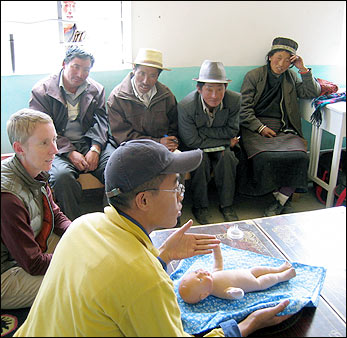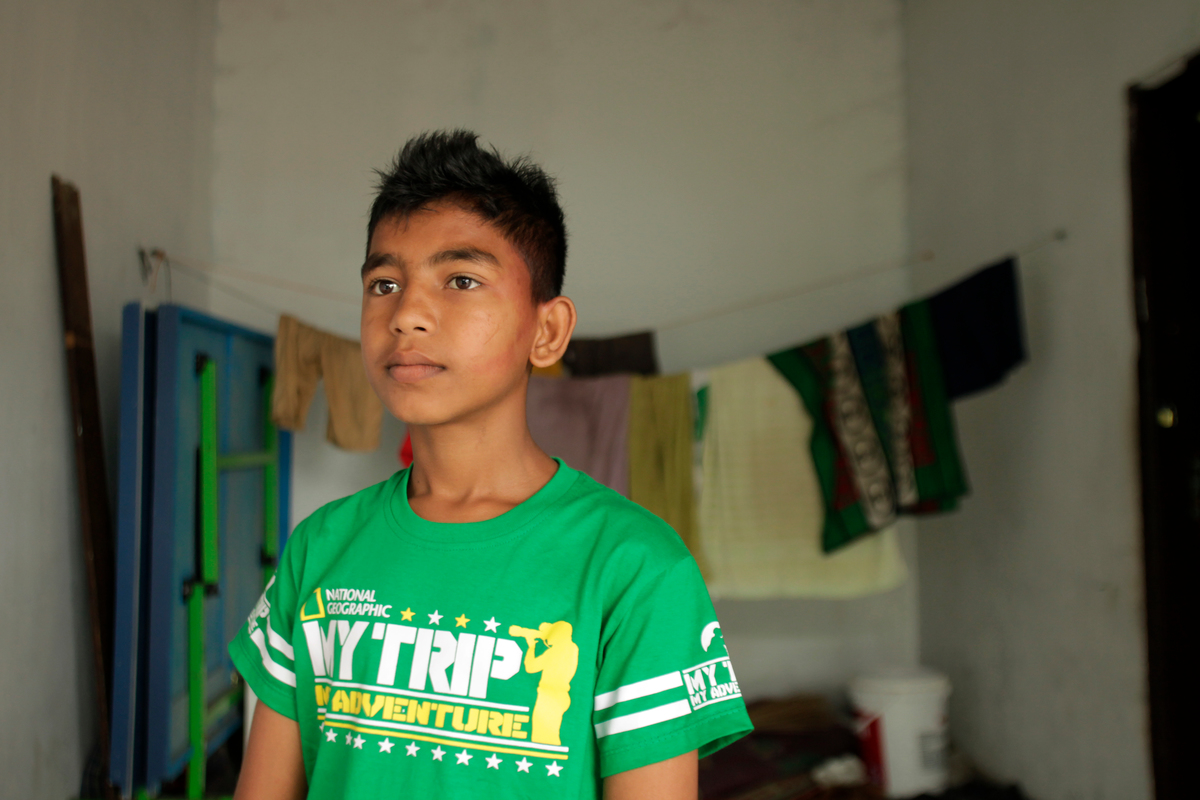Vietnamese "boat boy" practices medicine in Tibet
Vietnamese "boat boy" practices medicine in Tibet

GENEVA, April 28 (UNHCR) - On April 30, 1975, Saigon in Viet Nam fell to the Communists and the United States withdrew. Over the years that followed, hundreds of thousands of people fled Indo-China by boat - becoming known as the Vietnamese boat people. One of the refugees who washed up on the shores of Malaysia in 1977 in a fishing boat was a boy called Tran Nguyen Toan. Nearly 30 years later, he's now a Swiss-trained doctor, working with a non-governmental organisation on the Tibetan plateau to help rural and nomadic populations improve traditional childbirth practices.
"On November 17, 1977, when I was six years old, I left Viet Nam. It was our eighth attempt to leave. The other attempts failed because the fishing boat failed to arrive or the police showed up. That time we were lucky," says Toan on a recent visit back to his adopted home of Switzerland. Toan's story is marked by danger on the high seas, the hardship of family separation and the desire to heal.
Until 1975, Toan's father was a businessman with government clients in the coastal town of Nha Trang between Hue and Saigon (also known as Ho Chi Minh City). He quickly realised that under the new regime, things would be extremely difficult and became a fisherman to get the opportunity to leave.
For Toan, the youngest of six children, memories of the day they left Viet Nam are still strong.
"I returned from school and my father told me to put on my pyjamas. Then we went south by car and waited in darkened houses by the beach. Fishermen were signalling to each other and then a small boat came in to take us to a bigger boat - maybe about 25 metres long. We were over 120 people on a boat that could take 40 people," he remembers clearly. "It was hide-and-seek and I was very excited about it. But my parents were totally anxious."
The family had sent his elder sister to study in Switzerland in 1974 and the following year another brother and sister went as boat people to the Philippines. Toan, his father and two sisters also thought they would be going to the Philippines, but three huge storms pushed them south towards Malaysia.
"We spent two weeks on the water. On the second day we met a Norwegian boat which refused to pick us up. But they knew the storm was coming and gave us water and plastic sheeting to cover ourselves. It was very scary," says Toan. "Most families were split up among the boats that left that night. We were the only one of the nine boats to arrive in this period. We were very lucky. I think we are one of the few families to have survived intact."
Finally, after a stormy trip, their boat hit the shore of Terranganu on Malaysia's east coast, where they were helped by ethnic Chinese who found them on the beach. *
"The Malaysian Chinese gave us clothes and food. We didn't have any money. My mother had sewn jewels into my pants ... and thanks to this we could sell a necklace for 300 ringgit and we could get food. That night the police came and spoke to the leader. They beat him up ... the following day, they loaded us on a truck and took us to Palau Besar (an island off the coast) to a UNHCR refugee camp," says Toan.
After nine months in the camp, Toan, his father and sister were accepted as refugees by Switzerland as his elder sister already studying in Lausanne. The first thing the family did was to file the papers to get Toan's mother to join them. That took four long years.
"Out of 800,000 boat people, 250,000 went to Malaysia and only 6,000 to Switzerland. We were very lucky and our family felt very welcome in terms of social support," says Toan.
Unable to speak French, Toan started school in Grade 1 but by the second grade he could communicate with ease and loved learning. At 16, he started the naturalisation process to become Swiss, did his compulsory military service and went through medical school.
"As a kid I was always the healer of the family. I still have strong memories of my sisters with flu, bringing them tea and coining them (rubbing coins down the back) when they weren't well. I was very compelled towards well-being," he says.
"I went to medical school in Lausanne and was very rebellious. I was always trying to find alternatives ... and bringing what I was. Sometimes people had difficulties that I was not Swiss, I had different baggage and would bring different experiences," he said.
After doing post-graduate work at McGill University in Canada, Toan continued with family medicine in Utah in the US, working with deprived Latino immigrants for three years. Then he had the chance to work on the Tibetan plateau for an NGO called One Heart, focusing on maternal and child health around the time of childbirth in nomadic and rural populations. He has been working in Tibet for four years now.
Toan's choice of working environment and conditions surprises many of his relatives who wonder why he doesn't live in the US, practice medicine, buy a big car and home - the Vietnamese refugee dream.

"Working in Tibet in such harsh circumstances reminds you of the little miracles every day. My parents taught me to make the best of everything, to keep your head up and feel fortunate for what you have, because for them, it was such an abrupt end of freedom and quality of life," says Toan.
Being a refugee creates a bond, he adds. "I feel so deeply for them and those in Tibet. I meet ex-refugees who've returned from India and we spend a lot of time talking about things - this connection of being immigrants and vagabonds and sharing our lives - I have a deep level of compassion for them."
More than 25 years after he left Viet Nam, Toan returned on a month-long visit in early 2005. His mother had also returned to Viet Nam to start a school programme for orphans.
"My return was great. I went back for the first time to my home town, and visited my extended family from Saigon to Hue. I feel so fortunate to have been taken out of that closed environment and exposed to western education, but retaining my eastern heritage and background," he says. Toan remembers his family making up boxes of medicine every month in Switzerland to send back to Viet Nam to help his relatives survive.
"I feel very grateful to UNHCR because they really changed our lives. We could have been some of those boat people pushed back, and luckily the storm kept the pirates away. Such a dramatic experience carves your way of thinking and feeling, you come to appreciate things."
Toan has chosen an unconventional but personally rewarding career path - one that allows him to shatter preconceptions about refugees.
"I love provoking people in high society and showing them that immigrants and refugees are not parasites of society and properly affirming that," he says.
"They see a living example which counteracts their beliefs. They live so much in fear of being invaded. But I say we have so much to offer - our adaptability and ability to be positively creative, like what I do in Tibet, and to find the right level to work at. A great yeast for making bread."
* The first boat people landed on the east coast of Malaysia in May 1975. In all, nearly 255,000 Vietnamese boat people were given temporary asylum in Malaysia, where they were cared for by UNHCR, the Malaysian authorities and the Malaysian Red Crescent Society. At the height of the influx, Malaysia had eight camps for boat people along the east coast and in Sabah and Sarawak. A total of 248,410 were resettled in western countries and over 9,000 returned to Viet Nam.
By Jennifer Pagonis








